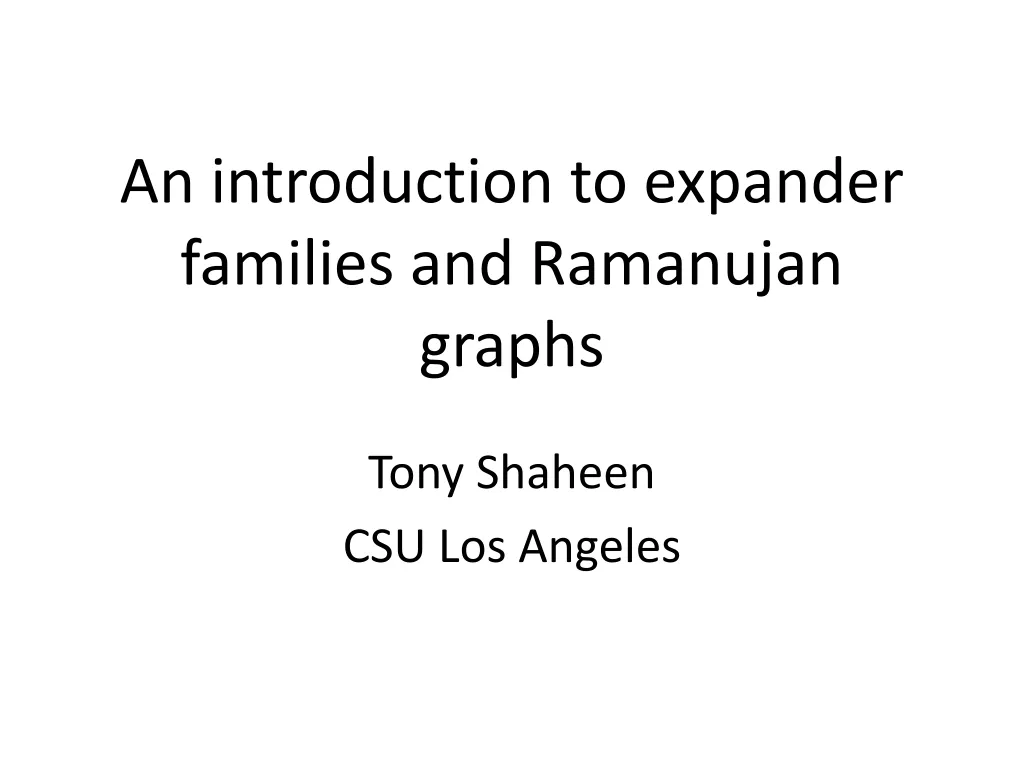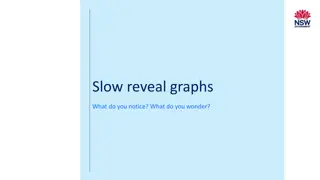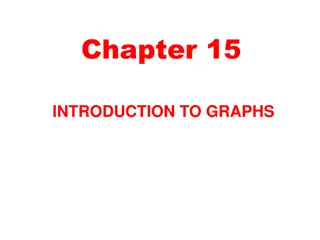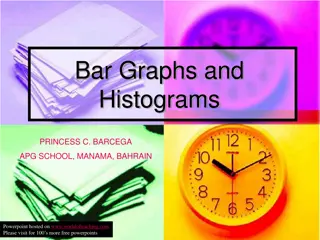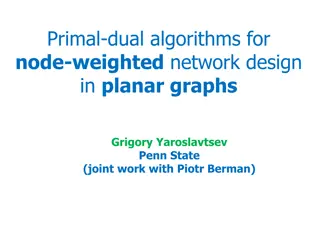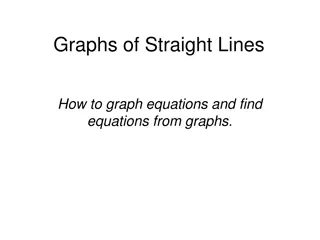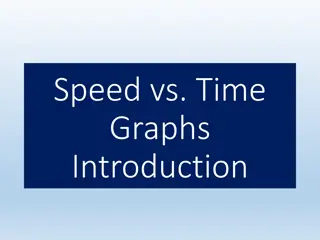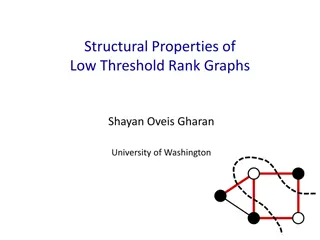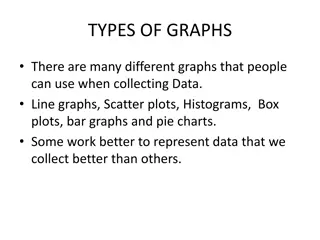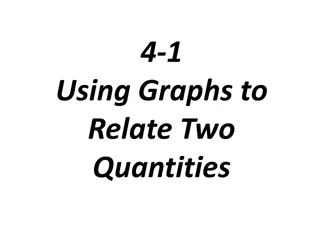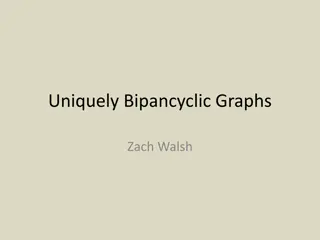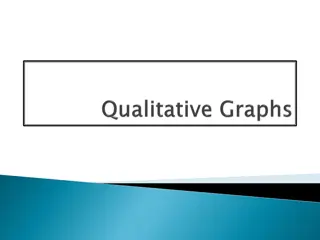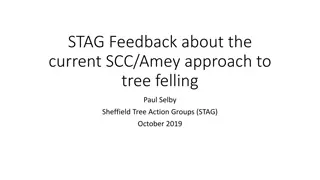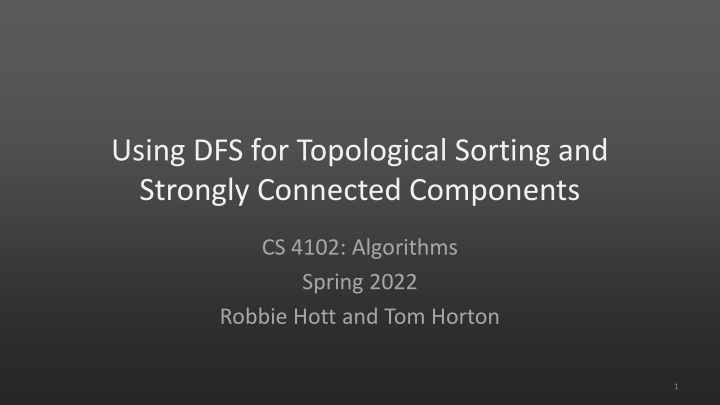
Topological Sorting and Strongly Connected Components
Explore the concept of topological sorting in directed acyclic graphs, learn about allowable orderings in CS classes, and see how Depth-First Search can be used for topological sorting and finish times. Understand the algorithm strategy and modified DFS functions for topological sorting. Discover forward vs. reverse topological sorting and the implications for ordering vertices in a directed graph.
Download Presentation

Please find below an Image/Link to download the presentation.
The content on the website is provided AS IS for your information and personal use only. It may not be sold, licensed, or shared on other websites without obtaining consent from the author. If you encounter any issues during the download, it is possible that the publisher has removed the file from their server.
You are allowed to download the files provided on this website for personal or commercial use, subject to the condition that they are used lawfully. All files are the property of their respective owners.
The content on the website is provided AS IS for your information and personal use only. It may not be sold, licensed, or shared on other websites without obtaining consent from the author.
E N D
Presentation Transcript
Using DFS for Topological Sorting and Strongly Connected Components CS 4102: Algorithms Spring 2022 Robbie Hott and Tom Horton 1
Topological Sorting Readings: CLRS 22.4 2
Topological Sort Given a directed acyclic graph, construct a linear ordering of the vertices such that if there is an edge from u to v, then u appears before v in the ordering. One valid topological sort is: V1 V6 V8 V3 V2 V7 V4 V5 3
Topological Sort What are allowable orderings I can take all these CS classes? Note there are many possible orderings Unlike sorting a list 4
Getting Dressed Underwear Socks Watch Pants Shoes Shirt Belt Tie Jacket
We Can Use DFS and Finish Times This is the same graph with a different layout. Topologically sorted vertices appear in reverse order of their finish times!
Topological Sort Algorithm Strategy: modify the two DFS functions so that they order nodes by finish-time in reverse order. This slide: modified version of DFS Sweep . DFS_sweep(G) 0 toposort-list = [ ] // empty list 1 for each vertex u in G.V 2 u.color = WHITE 3 u. = NIL 4 time = 0 5 for each vertex u in G.V 6 if u.color == WHITE // if unseen 7 DFS-VISIT(G, u) // explore paths out of u 8 // toposort-list contains the result
Topological Sort Algorithm DFS-VISIT(G, u) // modified to do topological sort 1 time = time + 1 // white vertex u has just been discovered 2 u.d = time // discovery time of u 3 u.color = GRAY // mark as seen 4 for each v in G.Adj[u] // explore edge (u, v) 5 if v.color == WHITE // if unseen 6 v. = u 7 DFS-VISIT(G, v) // explore paths out of v (i.e., go deeper ) 8 u.color = BLACK // u is finished 9 time = time + 1 10 u.f = time // finish time of u 11 toposort-list.prepend(u)
Forward vs. Reverse Topological sort is a type of sort Implies an ordering Can sort backwards, of course Forward topological order If edge vw in graph, then topo[v] < topo[w] Reverse topological order If edge vw in graph, then topo[v] > topo[w] And, every directed graph has a transpose, which means (see next slide)
Whats an Edge Mean? What does our graph model? Edge uv means do u first, then v. Or, Edge uv means task u depends on v (i.e. v must be done first) Underwear Underwear Shoes Shoes Pants Pants The latter is called a dependency graph forward in time vs. depend on this one Big deal? No, we can order vertices in reverse topological order if needed
Strongly Connected Components in a Digraph Readings: CLRS 22.5, but you can ignore the proof-y parts 11
Strongly Connected Components (SCCs) In a digraph, Strongly Connected Components (SCCs) are subgraphs where all vertices in each SCC are reachable from one another Thus vertices in an SCC are on a directed cycle Any vertex not on a directed cycle is an SCC all by itself Common need: decompose a digraph into its SCCs Perhaps then operate on each, combine results based on connections between SCCs 12
Real-world Example: Social Networks Model a social network of users Directed edge u->v means u follows v We want to identify a group of users who follow each other Maybe not directly OK if it s indirect, i.e. if there s a path connecting any pair in the group In this example, the group of solid-colored users is an SCC Note: if all pairs had to follow each other, we call this a clique 13
SCC Example Example: digraph below has 3 SCCs Note here each SCC has a cycle. (Possible to have a single-node SCC.) Note connections to other SCCs, but no path leaves a SCC and comes back Note there s a unique set of SCCs for a given digraph 14
Component Graph Sometimes for a problem it s useful to consider digraph G s component graph, GSCC It s like we collapse each SCC into one node Might need a topological ordering between SCCs 15
How to Decompose Digraph into SCCs Several algorithms do this using DFS We ll use CLRS s choice (by Kosaraju and Sharir) Algorithm works as follows: 1. Call DFS-sweep(G) to find finishing times u.f for each vertex u in G. 2. Compute GT, the transpose of digraph G. (Reminder: transpose means same nodes, edges reversed.) 3. Call DFS-sweep(GT) but do the recursive calls on nodes in the order of decreasing u.f from Step 1. (Start with the vertex with largest finish time in G sDFS tree, ) 4. The DFS forest produced in Step 3 is the set of SCCs 16
Why Do We Care about the Transpose? If we call DFS on a node in an SCC, it will visit all nodes in that SCC But it could leave the SCC and find other nodes Could we prevent that somehow? Note that a digraph and its transpose have the same SCCs Maybe we can use the fact that edge-directions are reversed in GT to stop DFS from leaving an SCC? But this depends on the order you choose vertices to do DFS-sweep() in GT 17
Why Do We Care About Finish Times? Our algorithm first finds DFS finish times in G Then calls recursive DFS on transpose GT from vertex with largest finish time (here, B) Reversed edges in GT stop it visiting nodes in other SCCs 18
Why Do We Care About Finish Times? After recursive DFS on transpose GT finds SCC containing B, next DFS will start from C Nodes in previously found SCC(s) have been visited Reversed edges in GT stop it visiting nodes in SCCs yet to be found 19
Ties to Topological Sorting Formal proof of correctness in CLRS, but hopefully from previous slides you re convinced it works! Note how the use of finish times makes this seem like topological sort. And it is, if you think of topological ordering for GSCC Cycles in G, but no cycles in GSCC so we could sort that Topological sort controls the order we do things, and DFS finds all the reachable nodes in an SCC 20
Final Thoughts There are many interesting problems involving digraphs and DAGs They can model real-world situations Dependencies, network flows, DFS is often a valuable strategy to tackle such problems For DAGs, not interested in back-edges, since DAGs are acyclic Ordering, reachability from DFS can be useful 21

